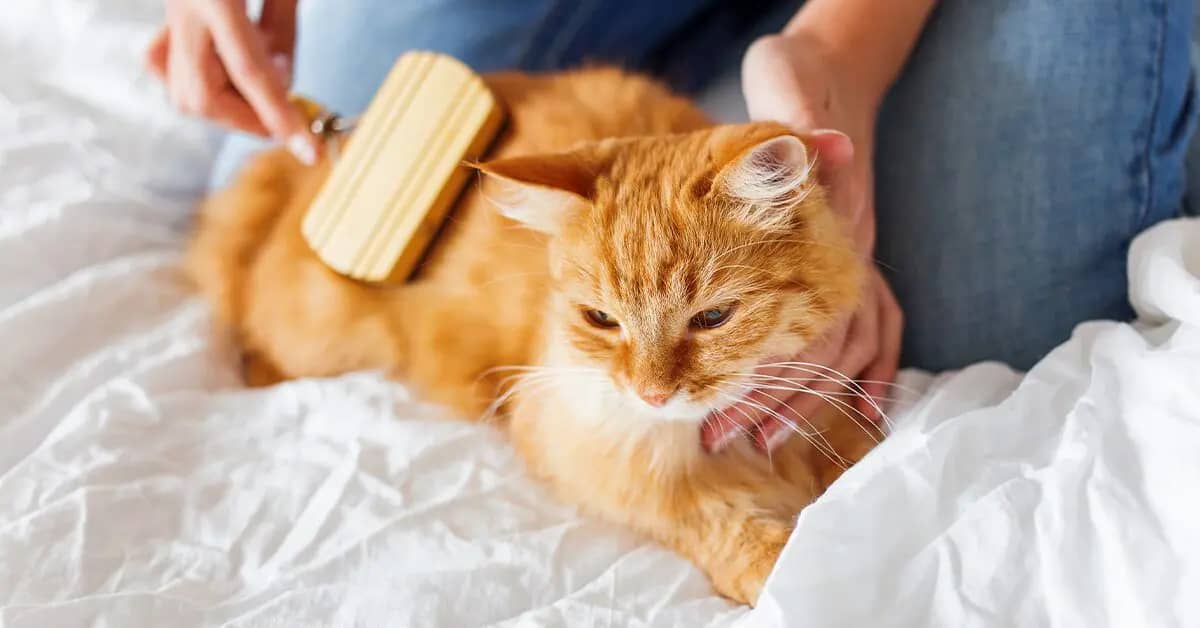Long-haired cats are a joy to have as companions, with their luxurious coats and regal appearance. However, they require consistent grooming to prevent mats, maintain their health, and reduce allergens in your home.
Allergens from cats are primarily found in their dander (tiny flakes of skin) and saliva, which stick to their fur and can spread throughout your living space.
By following a thorough grooming routine, you can minimize allergens while keeping your cat comfortable and healthy.
1. Why Grooming Matters for Allergens
Cats naturally groom themselves, but long-haired cats can have difficulty managing their thick coats, leading to matting and trapped allergens. Regular grooming helps:
- Remove loose fur and dander.
- Prevent mats that trap allergens.
- Reduce shedding, which can spread allergens around your home.
- Keep your cat’s skin healthy, preventing excess dander production.
- Allow you to bond with your cat through consistent care.
2. Essential Tools for Grooming
Having the right tools is key to an effective grooming routine. Here’s what you’ll need:
- Slicker brush: Removes loose fur and detangles small mats.
- Wide-tooth comb: Helps to gently work through thicker mats.
- Fine-tooth comb: Perfect for sensitive areas like the face, under the legs, and near the tail.
- Deshedding tool: Designed to remove undercoat fur, where allergens often accumulate.
- Pet-safe wipes: Great for quick clean-ups and reducing allergens without a full bath.
- Hypoallergenic cat shampoo: Use occasionally to clean your cat and reduce allergens on their coat.
- Microfiber cloth: Wiping your cat after grooming helps capture any remaining dander.
3. Step-by-Step Grooming Process
Step 1: Create a Calm Environment
- Choose a quiet, comfortable spot where your cat feels safe.
- Lay down a towel or grooming mat to prevent slipping.
- Keep treats handy to reward your cat during the process.
Step 2: Start with Brushing
- Detangle mats gently:
- Use your fingers or a wide-tooth comb to carefully loosen mats. Start from the edges and work inward to avoid pulling.
- For stubborn mats, use clippers or scissors, but be cautious not to cut your cat’s skin.
- Brush in the direction of hair growth:
- Use a slicker brush to remove loose hair and dirt. Start at the head and work your way down the body.
- Focus on areas prone to matting, such as the belly, chest, and behind the ears.
- Use a fine-tooth comb for sensitive areas:
- These include the face, paws, and tail base. Be gentle to avoid discomfort.
Step 3: Address Shedding
- Regular brushing, especially during shedding season, minimizes loose fur and allergens.
- A deshedding tool can help remove fur from the undercoat, which is a common source of allergens.
4. Bathing Your Long-Haired Cat
Bathing can help significantly reduce allergens, but it should be done only when necessary to avoid drying out your cat’s skin.
How to Bathe Your Cat:
- Use lukewarm water and a hypoallergenic cat shampoo.
- Wet your cat gently, avoiding the face.
- Lather the shampoo into their fur, focusing on areas where dander accumulates.
- Rinse thoroughly to remove all shampoo residue.
- Towel-dry your cat or use a pet-safe hairdryer on a low setting.
Frequency of Bathing:
Every 4–6 weeks is usually sufficient for long-haired cats unless they have a skin condition that requires more frequent baths.
5. Clean Their Environment
Reducing allergens isn’t just about grooming your cat—it also involves keeping their surroundings clean:
- Wash bedding weekly: Use hot water to kill allergens.
- Vacuum frequently: Invest in a vacuum with a HEPA filter to trap dander and fur.
- Use air purifiers: These can help remove airborne allergens from your home.
- Keep surfaces clean: Wipe down furniture and floors regularly to remove dander.
6. Diet and Skin Health
A healthy diet can reduce dander production and improve your cat’s coat condition. Here’s how:
- Feed a balanced diet: Look for high-quality cat food with omega-3 and omega-6 fatty acids.
- Hydration is key: Ensure your cat drinks plenty of water to maintain skin moisture.
- Consult your vet: If your cat has allergies or skin conditions, your vet may recommend a specialized diet or supplements.
7. Protect Yourself from Allergens
If you’re allergic to cats, take these precautions while grooming:
- Wear gloves and a mask to reduce direct exposure to allergens.
- Groom your cat in a well-ventilated area or outdoors.
- Wash your hands and change clothes immediately after grooming.
- Consider taking allergy medication or consulting an allergist for additional support.
8. Make Grooming a Positive Experience
Cats can be sensitive to grooming, so it’s important to make the process enjoyable:
- Start with short grooming sessions and gradually increase the time as your cat becomes more comfortable.
- Use treats, praise, and gentle strokes to reward good behavior.
- Be patient and take breaks if your cat becomes agitated.
Conclusion
Regular grooming of your long-haired cat is essential for their health and comfort, and it’s one of the most effective ways to reduce allergens in your home. By following the tips and steps outlined in this guide, you can maintain a clean, allergen-reduced environment while enjoying the company of your feline friend. Not only will your cat look and feel better, but you’ll also breathe easier knowing you’ve taken steps to manage allergens effectively.

